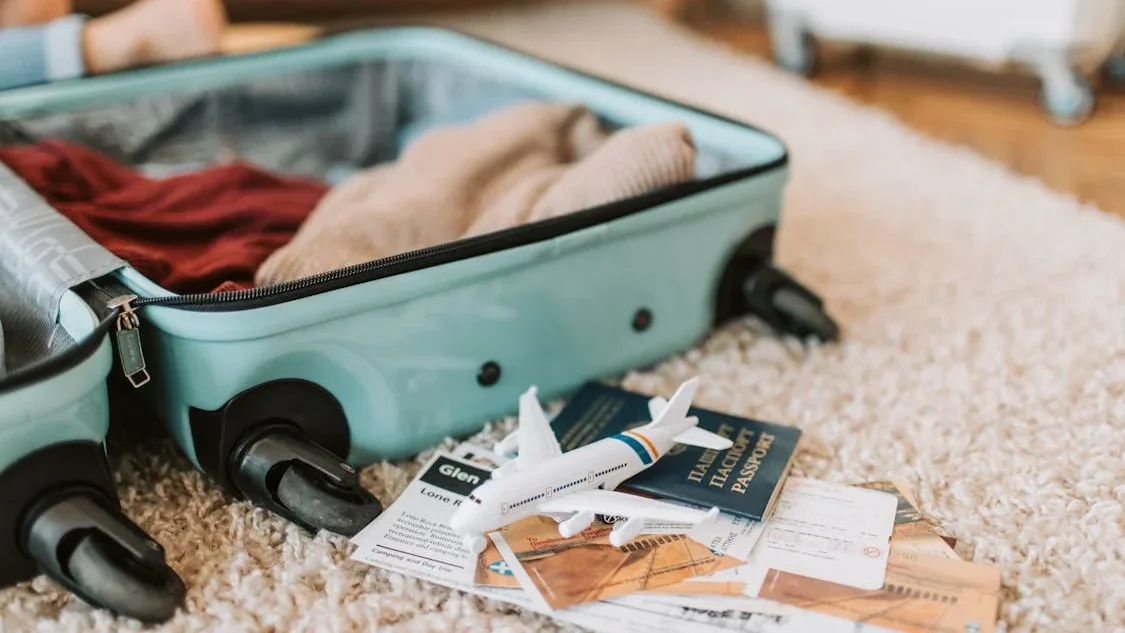Anúncios

What Is a Checked Bag? Key Differences Between Carry-On and Checked Baggage
When planning your next trip, one of the first decisions you’ll need to make is whether to bring a carry-on or a checked bag. The choice between carry-on vs. checked bag can significantly impact your travel experience, from convenience to cost and even security. Understanding the differences between these options will help you make an informed decision.
What Is a Checked Bag?
A checked bag is any luggage that you hand over to the airline during check-in, which is then transported in the plane’s cargo hold. These bags are usually larger and heavier than carry-on luggage, with weight limits typically ranging from 40 to 50 pounds. Checked baggage also comes with specific size restrictions, generally allowing combined dimensions (length + width + height) of up to 62 inches. Once checked in, the airline is responsible for ensuring your bag reaches your final destination, although this also introduces a risk of lost or delayed baggage.
Difference Between Carry-On and Checked Bag
The primary difference between carry-on luggage and a checked bag is where you store your belongings during the flight. Carry-on luggage is kept with you in the cabin, either in the overhead bin or under your seat, giving you easy access throughout the journey. In contrast, checked bags are stored in the cargo hold, meaning you won’t have access to them until after you land and retrieve them from baggage claim.
Other key differences include:
- Size and weight: Carry-ons are subject to stricter size limits, typically not exceeding 22 x 14 x 9 inches, while checked bags can be much larger.
- Security and convenience: With a carry-on, you avoid the risk of your bag being lost or delayed, and you can bypass baggage claim. However, you must adhere to the TSA’s 3-1-1 liquid rule for carry-ons, which limits the size of liquids you can bring.
When Should You Choose Carry-On vs. Checked Bag?
Choosing between a carry-on and a checked bag depends on the nature of your trip. If you’re traveling light, on a short trip, or want to avoid the hassle of waiting at baggage claim, a carry-on is likely the better option. On the other hand, if you’re packing for a longer trip, have larger items, or need to bring liquids over 3.4 ounces, checking a bag may be more practical.
Consider using a checked bag when:
- Traveling for more than a week
- Carrying items that are not allowed in carry-ons, such as large liquids
- You don’t mind waiting at baggage claim and paying baggage fees
For shorter trips, carry-on luggage can save you time, reduce costs, and simplify your journey.
Cost Considerations: Fees for Carry-On vs. Checked Bags
One of the biggest factors when deciding between carry-on luggage and a checked bag is the cost. Baggage fees can add up quickly, especially if you’re traveling on a budget airline or taking multiple flights. Understanding these fees can help you choose the most cost-effective option for your trip.
What Are Checked Bag Fees?
Checked bag fees vary depending on the airline, the number of bags, and the route you’re flying. On most domestic flights, airlines charge anywhere from $25 to $35 for the first checked bag, with higher fees for additional bags. International flights often include one free checked bag, but extra bags can cost significantly more.
Here’s a quick breakdown:
- Domestic flights: Typically $25-$35 for the first bag
- International flights: Often one free bag, with fees for additional bags ranging from $50 to $100+
Additionally, if your checked bag exceeds the airline’s weight or size limits, you could face hefty overweight or oversized bag fees. These can range from $75 to $200 or more, depending on the airline and the weight of your luggage.
Carry-On Fees and Airline Policies
While many airlines allow passengers to bring a carry-on for free, some budget carriers have started charging for carry-on luggage. For example, ultra-low-cost carriers like Spirit and Frontier often charge for both carry-on bags and checked luggage. Carry-on fees can range from $20 to $50 depending on the airline and whether you pay in advance or at the gate.
Moreover, airlines have strict size limits for carry-ons. If your bag doesn’t meet the required dimensions, you may be forced to check it at the gate, often for a higher fee than you would pay at check-in.
| Type of Bag | Typical Fees (Domestic) | Typical Fees (International) |
|---|---|---|
| First Checked Bag | $25 – $35 | Usually free, additional bags $50+ |
| Carry-On Bag | Free on most airlines, $20+ on budget carriers | Varies, often free |
Packing Strategies for Carry-On vs. Checked Bags
Whether you choose a carry-on or checked bag, packing efficiently can make all the difference in how smoothly your trip goes. Each option requires a different approach to packing, depending on space constraints, airline regulations, and the type of trip you’re taking. With the right strategies, you can maximize space, avoid fees, and ensure your belongings arrive in good condition.
Maximizing Space in Your Carry-On Luggage
Packing for a carry-on requires precision and smart organization, as space is limited. The key is to pack light and focus on versatility. Since carry-ons are small, it’s important to prioritize your essentials while also adhering to TSA restrictions, particularly the 3-1-1 rule for liquids.
Here are some effective carry-on packing strategies:
- Roll your clothes: Rolling clothes instead of folding them can save space and reduce wrinkles. This technique allows you to fit more into your bag while keeping items organized.
- Pack versatile clothing: Choose pieces that can be mixed and matched to create different outfits. Opt for neutral colors and versatile items like a pair of jeans or a jacket that can be dressed up or down.
- Use packing cubes: Packing cubes help organize your clothes and maximize space. They also make it easy to find specific items without unpacking your entire bag.
- Wear your bulkiest items: If you’re bringing heavier items like a coat or boots, wear them during your flight to save space in your carry-on.
- Limit liquids: Remember that liquids must be in containers of 3.4 ounces or less and fit into a quart-sized bag. Consider packing solid toiletries or buying liquids at your destination to save space.
By utilizing these strategies, you can ensure your carry-on is both organized and functional, making your travel experience smoother and more efficient.
Packing for a Checked Bag: What to Include
Packing for a checked bag allows for more flexibility, but it also requires careful consideration to avoid damage during transit and to stay within airline weight limits. Since checked bags are often larger and heavier, you can bring more items; however, it’s still important to pack strategically to make the most of your space and protect your belongings.
Here are some tips for packing a checked bag:
- Distribute weight evenly: Pack heavier items, such as shoes or toiletries, at the bottom of your bag to prevent it from becoming top-heavy. Balance the weight to avoid any awkward tipping when moving your luggage.
- Protect fragile items: If you’re packing anything fragile, such as electronics or souvenirs, wrap them in soft clothing or bubble wrap and place them in the center of your bag. This will provide extra cushioning and reduce the risk of damage.
- Use compression bags: For bulky items like jackets or sweaters, consider using compression bags to reduce their size. This will help you fit more into your checked luggage without exceeding weight limits.
- Label your bag: Always label your checked bag with your contact information in case it gets lost. You can also add a unique identifier, such as a colorful luggage tag or ribbon, to help you spot it easily at baggage claim.
- Pack liquids securely: Place any liquids in sealed plastic bags to prevent leaks. Checked bags are subject to rough handling, and a spill could damage your belongings.
With these packing strategies, you can make the most of your checked luggage, ensuring that you have everything you need for your trip while minimizing the risk of damage and avoiding extra fees.


